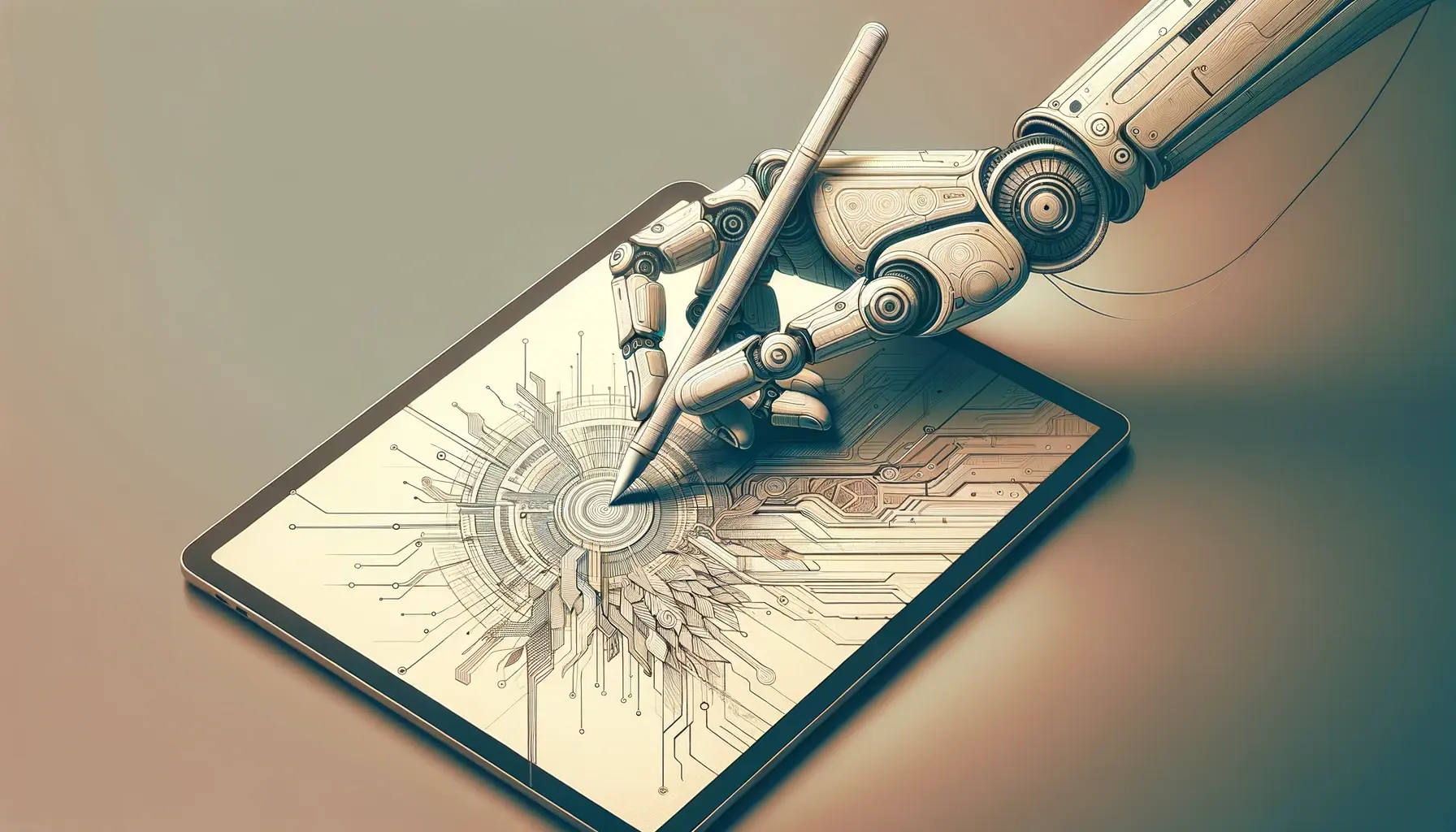You’re a designer, right? Ever wondered how AI could revamp your creative process? As tech advances, it’s vital to stay updated. AI isn’t just science fiction, it’s here, helping to create designs. But can you fully trust it? Let’s dive into the benefits, limitations, and real-life applications of AI in design. You’ll find out if AI can truly take your design work to the next level. Buckle up, it’s going to be a thrilling ride!
Understanding AI in Design
In your journey to leverage AI in design, you’ll find that numerous tools and platforms can significantly enhance your creativity and productivity. Understanding AI in design begins with grasping its capacity to automate tedious tasks and allow for more complex, intricate designs.
AI in graphic design is a game-changer. It’s not just about automating tasks, but also enhancing your creative capabilities. AI design tools like automated layout generators can create numerous design iterations in a fraction of the time it would take you manually. You can manipulate and modify these designs as per your requirements, making the process more efficient and less labor-intensive.
Moreover, AI to create designs opens up new avenues for innovation. With AI-powered design, you can experiment with different design styles, color schemes, and typography that you might not have considered otherwise. It’s like having a design assistant that doesn’t get tired and can produce an endless number of designs.
However, AI is a tool, not a replacement. It can enhance your skills and output, but it doesn’t replace the human touch. Embrace AI in your design process, but remember, it’s your creativity and understanding of design principles that make your work unique.
Benefits of AI-Based Designing
You’ll find numerous benefits when you start using AI-based designing tools in your work. AI design simplifies your creative process, enabling you to generate unique designs with precision and speed. No longer are you bound by the constraints of human imagination alone.
One key benefit of AI-based designing is its ability to learn from past designs and continuously improve. AI-powered design tools can analyze vast amounts of data, identify patterns, and make data-driven design suggestions. They’re not just tools; they’re your creative partners, enhancing your ability to create designs that resonate with your target audience.
Furthermore, artificial intelligence can help you automate tedious aspects of design workflow. For instance, you can use generative AI to create various color schemes, resize images automatically, or even create designs from scratch. This automation can save you valuable time, allowing you to focus more on strategic and creative aspects of your work.
Potential Limitations of AI in Design
While there are many benefits to AI-based designing, it’s important to consider a few potential limitations that could impact your design process. One major concern is the potential limitations of AI in design. It’s true that AI-powered tools have revolutionized the industry, but they aren’t without their drawbacks.
For instance, AI in graphic design can often lack the human touch and intuition that makes a design truly connect with its audience. AI tools for graphic design may generate results faster, but they might lack the creativity and originality a human designer brings to the table.
Moreover, AI applications are still dependent on the data they are trained on. If this data is biased or incomplete, the output could be subpar. AI also can’t understand context as well as a human can, which could lead to designs that are aesthetically pleasing but miss the mark in terms of message or appropriateness.
Lastly, while AI-powered tools are increasingly accessible, they do require a certain level of technical expertise to use effectively. The learning curve can be steep, and this might slow down the design process initially.
Real-Life Applications of AI in Design
Several real-world examples can show you how AI has been effectively utilized in the design industry. The use of AI to create designs has become increasingly popular, and AI graphic design tools are now more accessible than ever.
For instance, companies like Canva and Adobe are using AI to make design more intuitive for users. Canva uses AI to suggest design elements, while Adobe’s AI, named Sensei, can automate tedious tasks like cropping photos or matching colors. These real-life applications of AI in design are saving designers time and effort, allowing them to focus more on creativity and less on mundane tasks.
AI is also transforming the design industry by enabling designers to create more personalized experiences. Netflix, for example, uses AI to generate personalized artwork for each viewer based on their viewing history. This kind of personalization wouldn’t be possible without AI.
Frequently Asked Questions
How Much Time Can Be Saved by Using AI for Design Purposes Compared to Traditional Methods?
Absolutely, you’ll save considerable time using AI for design purposes compared to traditional methods. It’s hard to quantify, but it’s plausible you could slash your time commitment by half or even more.
What Are the Costs Associated With Implementing AI Technology for Design Purposes?
Yes, implementing AI for design has costs. You’ll need to invest in AI software, hardware, and possibly training. However, these costs can be offset by the increased efficiency and quality of your designs.
Are There Specific Industries Where AI-Based Designing Is More Prevalent?
Yes, AI-based designing is particularly prevalent in industries like fashion, architecture, and automotive. They’re harnessing AI’s capabilities for predictive trends, spatial planning, and streamlined manufacturing processes, respectively.
How Can AI in Design Be Integrated With Other Technological Advancements Like VR or Ar?
Sure, you can integrate AI with VR or AR in design. You’d employ AI to generate designs, then use VR or AR to visualize them. It’s a cutting-edge approach that enhances design accuracy and efficiency.
What Are Some Potential Future Developments in the Field of Ai-Based Designing?
In the future, you’ll likely see AI-based designing improve with the integration of virtual and augmented reality. You might also witness AI developing more intuitive and user-friendly interfaces, creating a seamless design experience.
Conclusion
AI can revolutionize your design process. It offers efficiency, personalization, and precision, though it’s not without limitations, like lack of originality. Yet, with examples like AI-driven logo creation and website designing, it’s clear AI’s influence in design is growing. Harnessing AI in design, therefore, could propel you ahead in an ever-evolving digital landscape, ensuring you stand out with smarter, quicker, and more targeted solutions.


